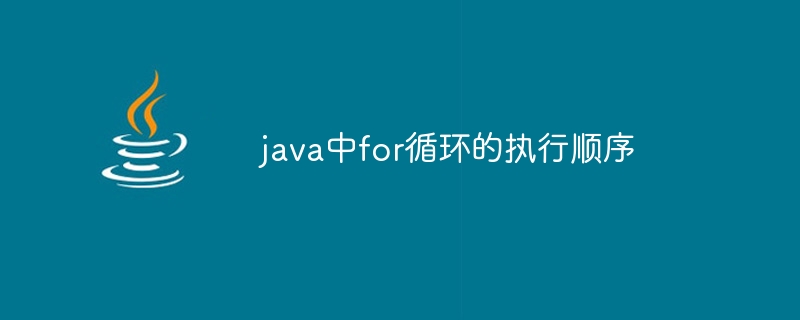Home >Java >javaTutorial >Execution order of for loop in java
Execution order of for loop in java
- 下次还敢Original
- 2024-05-07 04:33:181011browse
The execution sequence of the for loop in Java is: 1. Initialize variables, 2. Test conditions, 3. Execute loop body, 4. Update variables, 5. Repeat steps 2-4 until the condition is false.

The execution sequence of for loop in Java:
The for loop in Java is a control structure, used To repeatedly execute a series of statements until a specific condition is met. The execution sequence is as follows:
- Initialize variables: The for loop first initializes one or more loop variables to track the progress of the loop.
- Test the condition: Then, the loop evaluates a conditional expression. If the condition is true, the statements in the loop body are executed.
- Execute the loop body: If the condition is true, execute the statements in the loop body. The body of a loop can contain any number of statements, including other looping or branching statements.
- Update variables: After the loop body is executed, the loop variable will update its value. This usually involves incrementing or decrementing a loop variable.
- Return to step 2: The loop will return to step 2 to evaluate the conditional expression again. If the condition is still true, the loop continues with steps 3 and 4.
- End of loop: If the condition eventually becomes false, the loop will end and control will transfer to the statement following the loop.
Example:
The for loop below will print numbers from 1 to 100:
<code class="java">for (int i = 1; i <= 100; i++) {
System.out.println(i);
}</code>
In this example:
-
int i = 1;Initialize loop variableito 1. -
i <= 100;is a conditional expression that tests whetheriis less than or equal to 100. -
System.out.println(i);is the loop body, which prints the value ofi. -
iUpdate the loop variable, incrementingiby 1.
The above is the detailed content of Execution order of for loop in java. For more information, please follow other related articles on the PHP Chinese website!
Statement:
The content of this article is voluntarily contributed by netizens, and the copyright belongs to the original author. This site does not assume corresponding legal responsibility. If you find any content suspected of plagiarism or infringement, please contact admin@php.cn
Previous article:Usage of service layer in javaNext article:Usage of service layer in java

